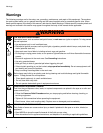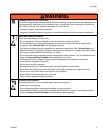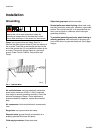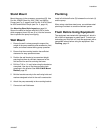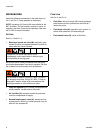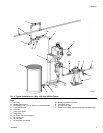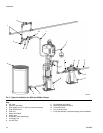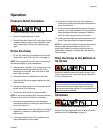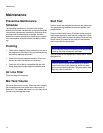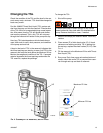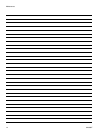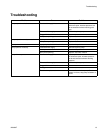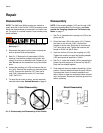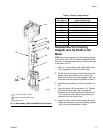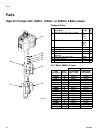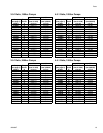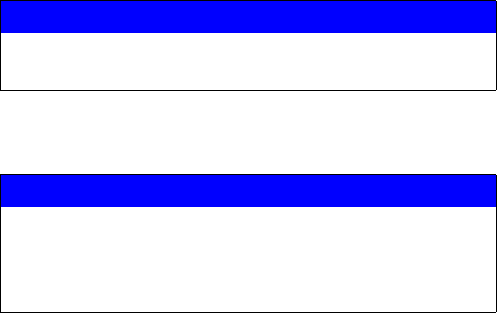
Maintenance
12 3A0538F
Maintenance
Preventive Maintenance
Schedule
The operating conditions of your particular system
determine how often maintenance is required. Establish
a preventive maintenance schedule by recording when
and what kind of maintenance is needed, and then
determine a regular schedule for checking your system.
Your maintenance schedule should include the follow-
ing:
Flushing
• Flush before changing colors, before fluid can dry in
the equipment, at the end of the day, before storing,
and before repairing equipment.
• Flush at the lowest pressure possible. Check con-
nectors for leaks and tighten as necessary.
• Flush with a fluid that is compatible with the fluid
being dispensed and the equipment wetted parts.
Air Line Filter
Drain and clean as necessary.
Mix Tank Volume
Do not let the mix tank run dry. When the tank is empty,
the pump demands more power as it tries to suck in
some fluid. This causes the pump to run too fast, which
can seriously damage the pump.
Stall Test
Perform a stall test periodically to ensure the piston seal
is in good working condition and prevent system over-
pressurization:
Close the fluid shutoff valve (D) closest to the pump on
the downstroke and be sure that the pump stalls. Open
the fluid shutoff valve to restart the pump. Close the fluid
shutoff valve (D) closest to the pump on the upstroke
and be sure that the pump stalls.
Stop the pump on the downstroke, before the air motor
changes over.
NOTICE
Do not allow the pump to run quickly for a long period
of time as this may damage the packings.
NOTICE
Failure to stop the pump at the bottom of its stroke
allows fluid to dry on the piston rod, which can dam-
age the throat packings and the TSL pump piston seal
when the pump is restarted.



